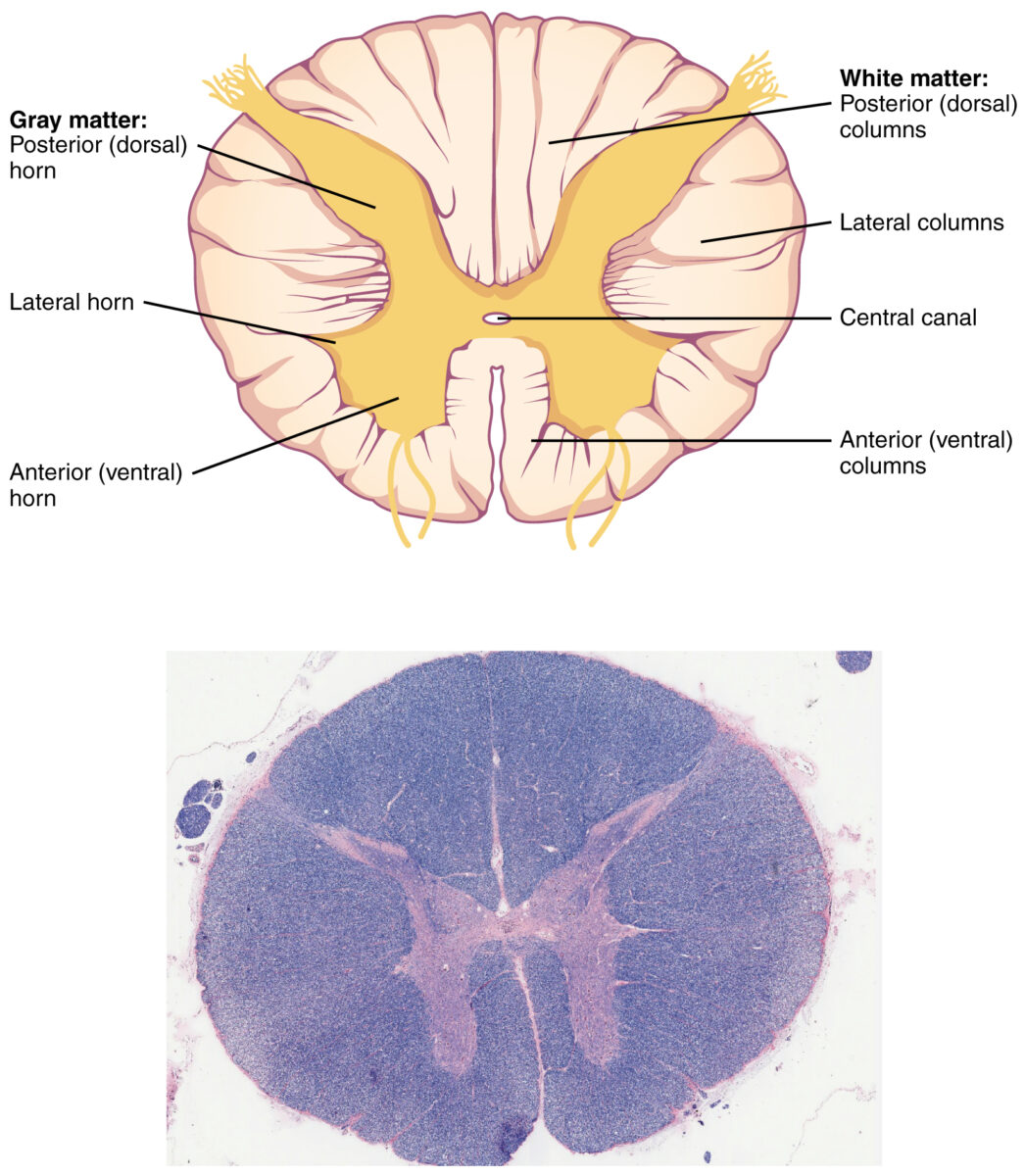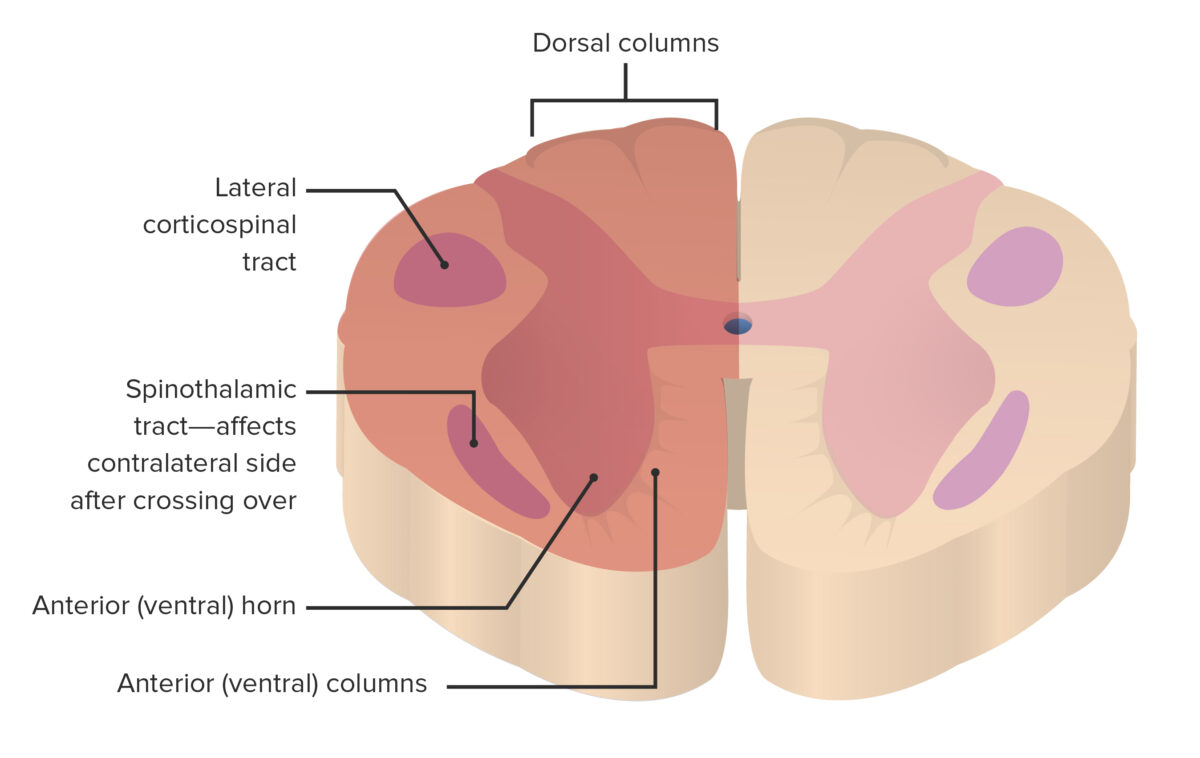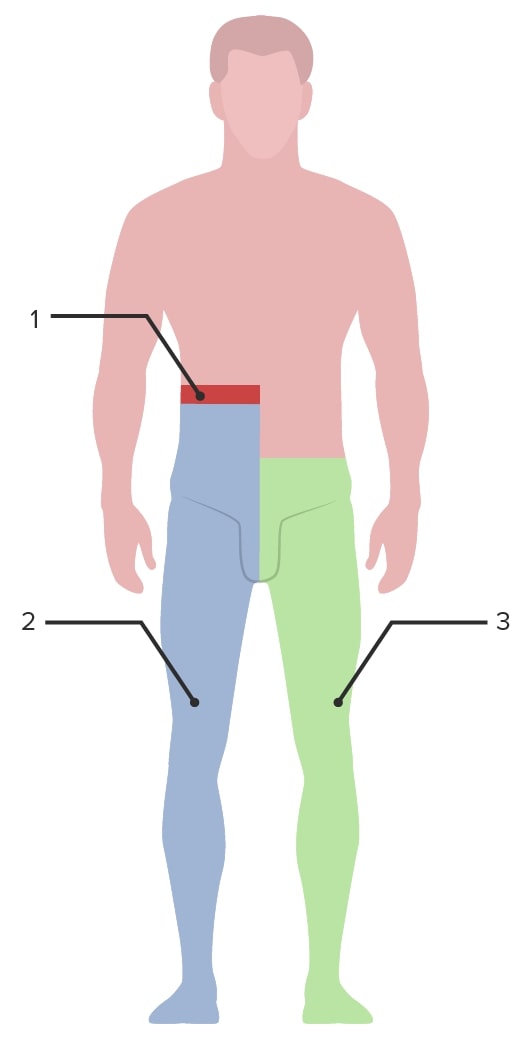Brown-Séquard syndrome (BSS) is a rare neurologic injury that results from hemisection of the spinal cord Spinal cord The spinal cord is the major conduction pathway connecting the brain to the body; it is part of the CNS. In cross section, the spinal cord is divided into an H-shaped area of gray matter (consisting of synapsing neuronal cell bodies) and a surrounding area of white matter (consisting of ascending and descending tracts of myelinated axons). Spinal Cord: Anatomy, leading to weakness and paralysis of one side of the body and sensory Sensory Neurons which conduct nerve impulses to the central nervous system. Nervous System: Histology loss on the opposite side. This syndrome is most often due to trauma, but it may also occur with disk herniation Herniation Omphalocele, hematoma Hematoma A collection of blood outside the blood vessels. Hematoma can be localized in an organ, space, or tissue. Intussusception, or tumor Tumor Inflammation. Clinical presentation is consistent with ipsilateral damage to the corticospinal tracts Corticospinal Tracts Central Cord Syndrome and posterior columns (weakness, loss of proprioception Proprioception Sensory functions that transduce stimuli received by proprioceptive receptors in joints, tendons, muscles, and the inner ear into neural impulses to be transmitted to the central nervous system. Proprioception provides sense of stationary positions and movements of one's body parts, and is important in maintaining kinesthesia and postural balance. Neurological Examination, and vibration Vibration A continuing periodic change in displacement with respect to a fixed reference. Neurological Examination sensation) below the level of the lesion, and contralateral anterior column Anterior column Spinal Cord: Anatomy symptoms owing to the unilateral involvement of the spinothalamic tract (loss of pain Pain An unpleasant sensation induced by noxious stimuli which are detected by nerve endings of nociceptive neurons. Pain: Types and Pathways and temperature sensation). Diagnosis is confirmed with MRI. Management depends on the etiology and site of injury, and timely intervention is associated with a favorable prognosis Prognosis A prediction of the probable outcome of a disease based on a individual's condition and the usual course of the disease as seen in similar situations. Non-Hodgkin Lymphomas and recovery.
Last updated: Dec 15, 2025
Brown-Séquard syndrome (BSS) is a rare neurologic injury that results from hemisection of the spinal cord Spinal cord The spinal cord is the major conduction pathway connecting the brain to the body; it is part of the CNS. In cross section, the spinal cord is divided into an H-shaped area of gray matter (consisting of synapsing neuronal cell bodies) and a surrounding area of white matter (consisting of ascending and descending tracts of myelinated axons). Spinal Cord: Anatomy, leading to weakness and paralysis of one side of the body and loss of pain Pain An unpleasant sensation induced by noxious stimuli which are detected by nerve endings of nociceptive neurons. Pain: Types and Pathways and temperature sensation on the opposite side.

Cross-sectional view of anatomy of the spinal cord
Image: “Spinal Cord Cross Section” by OpenStax. License: CC BY 4.0
Area of the spinal cord affected by Brown-Séquard (shaded in salmon color)
Image by Lecturio.The most frequent cause of BSS is penetrating injury. There are nontraumatic causes as well.
Brown-Séquard syndrome occurs with hemisection of the spinal cord Spinal cord The spinal cord is the major conduction pathway connecting the brain to the body; it is part of the CNS. In cross section, the spinal cord is divided into an H-shaped area of gray matter (consisting of synapsing neuronal cell bodies) and a surrounding area of white matter (consisting of ascending and descending tracts of myelinated axons). Spinal Cord: Anatomy after an injury or other pathology. The neurologic findings on exam are related to the level of the spinal cord Spinal cord The spinal cord is the major conduction pathway connecting the brain to the body; it is part of the CNS. In cross section, the spinal cord is divided into an H-shaped area of gray matter (consisting of synapsing neuronal cell bodies) and a surrounding area of white matter (consisting of ascending and descending tracts of myelinated axons). Spinal Cord: Anatomy lesion.

Image representing the clinical findings in Brown-Séquard syndrome:
The green area represents the side of the spinal cord lesion (right side).
1: Level of the lesion
2: Ipsilateral loss of proprioception and vibratory sensation occurs below the level of the lesion (dorsal columns) and motor function (corticospinal tract).
3: Contralateral loss of pain and temperature sensation occurs beginning approximately 2 levels below the level of the lesion (spinothalamic tract).
Treatment of BSS depends on the etiology and site of injury. Complications are mainly due to penetrating trauma wounds, in untreated cases, or with late intervention. Prognosis Prognosis A prediction of the probable outcome of a disease based on a individual’s condition and the usual course of the disease as seen in similar situations. Non-Hodgkin Lymphomas in BSS is good as compared with other spinal cord Spinal cord The spinal cord is the major conduction pathway connecting the brain to the body; it is part of the CNS. In cross section, the spinal cord is divided into an H-shaped area of gray matter (consisting of synapsing neuronal cell bodies) and a surrounding area of white matter (consisting of ascending and descending tracts of myelinated axons). Spinal Cord: Anatomy syndromes owing to its incomplete involvement of the SC.